Mobile phone sales to end users fell just short of one billion units in 2006, with last quarter sales apparently boosted by preparations for the Chinese New Year.
The figures from Gartner reveal worldwide mobile phone sales cruising to 990.8 million units in 2006, up a hefty 21.3% from 2005’s 816.6 million units, but still a tad short of the one billion predicted.
 The market seems to be consolidating around the big name manufacturers, with other vendors now only accounting for 14% of worldwide mobile phone sales in 2006 – down 5% from 2005.
The market seems to be consolidating around the big name manufacturers, with other vendors now only accounting for 14% of worldwide mobile phone sales in 2006 – down 5% from 2005.
Nokia
Cellular kings Nokia continue to be the big cheese, the head honcho, the main squeeze and the top of the mountain, hogging a lardy 36.2% market share with 103 million units shifted in the fourth quarter of 2006. This represents a rise of 1.2 percentage points over the same period in 2005.
For the whole of 2006, Nokia shifted nigh-on 345 million mobile phones, grabbing a market share of 34.8%.
“Despite attracting criticism for lack of ‘slim’ products and a weak mid- range offering, Nokia was not only able to hold its No.1 position, but grow market share. Strong low-cost product offerings in the emerging markets, as well as feature rich products in the mature market, proved to be the right combination for Nokia in 2006,” commented Carolina Milanesi, principal analyst for mobile terminals research at Gartner UK.
Motorola
Puffing some way behind up the cellular hill is Motorola, who flogged a ferret’s finger over 61 million mobile phones in the fourth quarter to scoop up a market share of 21.5%.
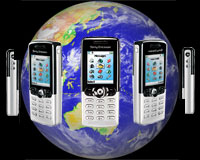 Motorola’s total sales for 2006 hit 209 million units, which translates into a 21.1 percent market share.
Motorola’s total sales for 2006 hit 209 million units, which translates into a 21.1 percent market share.
Samsung
Slipping quietly into third place is Samsung, boasting fourth quarter sales of 32 million mobile phones to snaffle an 11.3% market share.
Overall sales in 2006 were slightly more than 116 million units, a 12% increase from 2005.
Sony Ericsson
Close enough to let Samsung feel the lick of their competitive tongues is Sony Ericsson, who produced a strong last quarter of 2006, notching up 25.7 million mobile phones across the world, earning them a market share of 9%.
Sony Ericsson’s overall sales for 2006 hit 73.6 million units, with their market share growing by 1.1 percentage points to 7.4%.
LG
In fifth place is the flagging LG, whose 17.8 million last quarter mobile phone sales saw their market share slump to 6.3 percent, down from 7.2% in the same period in 2005.
Sagem
Elbowing BenQ out from the leading six pack, Sagem registered 4.36 million units and a 1.5% market share
Worldwide sales
Fourth quarter sales in Asia-Pacific continued to soar, reaching 87.7 million units, a 56% rise from the same time in 2005.
Total unit sales for 2006 sales totalled 301 million units, up 47% from 2005’s total, with slim phones being the big sellers.
The Eastern Europe, Middle East and Africa sector saw 52.4 million new mobile phones shifted during the fourth quarter of 2006, 13% higher than 2005.
In Japan, 13 million units zipped across the sales counters, adding up to an increase of 10.9% from the fourth quarter of 2005
Latin America saw year-over-year sales up 13.5%, while North America scored a record 44.8 million units sold to end users in the fourth quarter of 2006.
Even more phones were sold in Western Europe, with sales in the fourth quarter of 2006 hitting 51.8 million phones.
“We look forward to another exciting year in the mobile phone industry with more technologies becoming available and new players from other industries entering and adding some spice to an already very highly competitive market. We expect growth to slow down and overall mobile phone sales to be up to 1.2 billion worldwide,” concluded Milanesi.
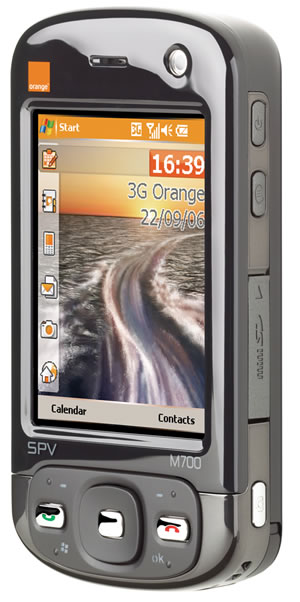 There’s been shots of the
There’s been shots of the 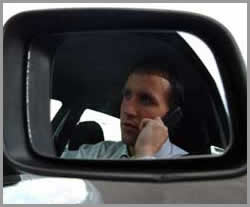 As of today, drivers using their mobile phone while driving in the UK will be hit with increased fines.
As of today, drivers using their mobile phone while driving in the UK will be hit with increased fines.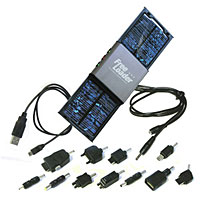 Having a ton of the latest technological gadgets bulging in your pants may give you a Noughties swagger, but you’ll be looking like a prize chump if the batteries go flat, so Solar Technology’s new Freeloader charger might help you keep your cool.
Having a ton of the latest technological gadgets bulging in your pants may give you a Noughties swagger, but you’ll be looking like a prize chump if the batteries go flat, so Solar Technology’s new Freeloader charger might help you keep your cool.
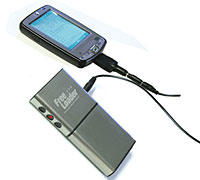
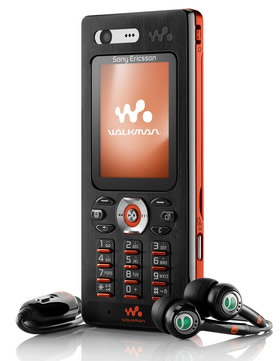 USB rules the roost for people loading and unloading content on and off their mobiles phones. It was employed in more handsets than all other interface standards combined in 2006, according to iSuppli Corp.
USB rules the roost for people loading and unloading content on and off their mobiles phones. It was employed in more handsets than all other interface standards combined in 2006, according to iSuppli Corp. Looking deeper, deeper, deeper into his shiny orb (oo-er), the beardy Cerf revealed that it won’t be personal computers fuelling the growth of the internet. Instead he reckons that the expansion of the worldwide web will be powered by mobile phones, with countries like India snapping up zillions of the fellas and getting online en masse.
Looking deeper, deeper, deeper into his shiny orb (oo-er), the beardy Cerf revealed that it won’t be personal computers fuelling the growth of the internet. Instead he reckons that the expansion of the worldwide web will be powered by mobile phones, with countries like India snapping up zillions of the fellas and getting online en masse. “The mobile phone has become an important factor in the Internet revolution,” he added.
“The mobile phone has become an important factor in the Internet revolution,” he added.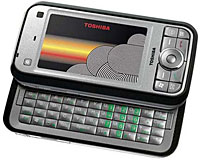 A cavalcade of new phones are continuing to spew forth from the 3GSM World Congress bash in Barcelona, and one that has especially warmed our toilet seats of desire is the ‘G900’ smartphone from Toshiba.
A cavalcade of new phones are continuing to spew forth from the 3GSM World Congress bash in Barcelona, and one that has especially warmed our toilet seats of desire is the ‘G900’ smartphone from Toshiba.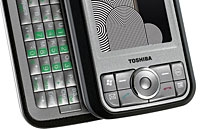 To ensure that the vast display is topped up with fast and fresh web pages there’s ultra-nippy HSDPA connectivity onboard (take that, iPhone!), with 64MB of internal memory and a miniSD card taking care of storage duties.
To ensure that the vast display is topped up with fast and fresh web pages there’s ultra-nippy HSDPA connectivity onboard (take that, iPhone!), with 64MB of internal memory and a miniSD card taking care of storage duties. Extra security comes in the form of a rear biometric scanner, and there’s also Bluetooth with A2DP support, Wi-Fi, USB On-The-Go and Microsoft’s new Windows Mobile 6 OS.
Extra security comes in the form of a rear biometric scanner, and there’s also Bluetooth with A2DP support, Wi-Fi, USB On-The-Go and Microsoft’s new Windows Mobile 6 OS.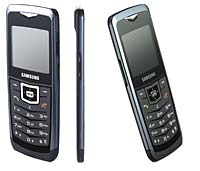 There may be controversy on the catwalks, but thin remains in with the design bods at Samsung, who have just unleashed a trio of anorexic handsets in their Ultra range, the U300, U600, U700 and ultra-thin U100.
There may be controversy on the catwalks, but thin remains in with the design bods at Samsung, who have just unleashed a trio of anorexic handsets in their Ultra range, the U300, U600, U700 and ultra-thin U100.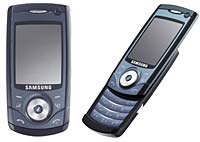 Back to the real world, there’s no denying that the U100 is an impressive piece of engineering – and purdy as a picture too – packing in a 3 mega-pixel camera, a 1.93″ color TFT screen and 11 hours of music play time into its 5.9mm wide frame.
Back to the real world, there’s no denying that the U100 is an impressive piece of engineering – and purdy as a picture too – packing in a 3 mega-pixel camera, a 1.93″ color TFT screen and 11 hours of music play time into its 5.9mm wide frame.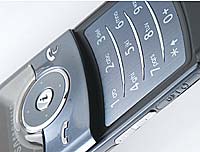 Adjusting the BS output to ‘stun,’ the press announcement tells us that the handset apparently exudes “elegance and modern style… for the ultimate sophistication” and comes in a suitably daftly-named set of colours, including sapphire blue, garnet red, platinum metal and copper gold casing.
Adjusting the BS output to ‘stun,’ the press announcement tells us that the handset apparently exudes “elegance and modern style… for the ultimate sophistication” and comes in a suitably daftly-named set of colours, including sapphire blue, garnet red, platinum metal and copper gold casing. Wrapping up the new line-up is the U300, a 9.6-mm clamshell with a 3-megapixel camera, Bluetooth, TV-out capability and 70MB of onboard storage (but no MicroSD slot).
Wrapping up the new line-up is the U300, a 9.6-mm clamshell with a 3-megapixel camera, Bluetooth, TV-out capability and 70MB of onboard storage (but no MicroSD slot).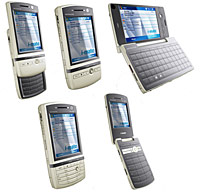 In an advanced Hedge-Betting exercise, i-mate has announced its new range of Windows Mobile devices, with a set of designs mirroring just about every handset currently available on the market.
In an advanced Hedge-Betting exercise, i-mate has announced its new range of Windows Mobile devices, with a set of designs mirroring just about every handset currently available on the market.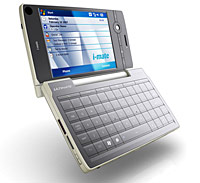 Christened the “Ultimate” range, the WM6-powered devices – all five of ’em – are numbered 5150, 6150, 7150, 9150, and 8150 (clockwise from the upper left in the compilation photo) – if you’re bored, you can play “spot the inspiration” and see if you match i-mate’s new offerings to current designs by other manufacturers.
Christened the “Ultimate” range, the WM6-powered devices – all five of ’em – are numbered 5150, 6150, 7150, 9150, and 8150 (clockwise from the upper left in the compilation photo) – if you’re bored, you can play “spot the inspiration” and see if you match i-mate’s new offerings to current designs by other manufacturers. Full details of the whole range are still dribbling through, but we’ve learnt that the Ultimate 5150 slider comes with an Intel Bulverde 520MHz CPU, VGA screen, 256MB ROM and 128MB RAM, Wi-Fi, microSD memory card slot and a 2.0 megapixel camera.
Full details of the whole range are still dribbling through, but we’ve learnt that the Ultimate 5150 slider comes with an Intel Bulverde 520MHz CPU, VGA screen, 256MB ROM and 128MB RAM, Wi-Fi, microSD memory card slot and a 2.0 megapixel camera.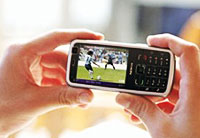 Nordic big-knobs Nokia have knocked out another two handsets for your delectation today.
Nordic big-knobs Nokia have knocked out another two handsets for your delectation today.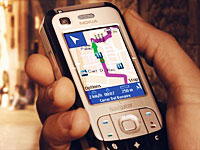 Lurking on the back is a 2 megapixel camera, with the N77 delivering on the multimedia front, offering visual radio and support for MP3, AAC, AAC+, eAAC+ and WMA media.
Lurking on the back is a 2 megapixel camera, with the N77 delivering on the multimedia front, offering visual radio and support for MP3, AAC, AAC+, eAAC+ and WMA media.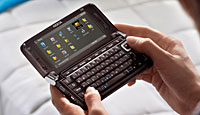 Nokia E90 Communicator
Nokia E90 Communicator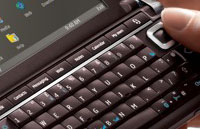 There’s also integrated GPS and Nokia Maps wedged into the chunky handset, but all those features are going to come at a wallet-whipping price, with the E90 expected to be priced at around a stratospheric €750.
There’s also integrated GPS and Nokia Maps wedged into the chunky handset, but all those features are going to come at a wallet-whipping price, with the E90 expected to be priced at around a stratospheric €750.